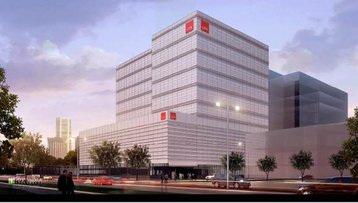The Lippo Group is looking to capitalize on the increased demand for data centers in Indonesia by building what could be one of the largest data center complexes in the world, according to a report on the Jakarta Globe.
Located in the Cikarang district, about 30km east of Jakarta, the data center complex will be run by Graha Teknologi Nusantari (GTN), which is a joint venture between Lippo subsidiary Multipolar Technology, Japan’s Mitsui & Co and subsidiary Mitsui Knowledge Industry. Multipolar has a 65 percent stake in GTN, while Mitsui and Mitsui Knowledge hold 25 percent and 10 percent respectively.
The master plan calls for GTN to eventually put up three buildings with a total floor space of 40,000 sq m (some 400,000 sq ft) and 20,000 racks. The first stage of development will see 8,000 server racks in the first data center building that is currently being built, and will require an estimated investment of between $25 million and $30 million.
Construction on the first building is understood to have started last week, with operations expected to start by April next year. However, the company has not decided when it will start building the second data center building.
“Anticipating high demand from the market, especially in the financial and industrial sectors, we’ve prepared as much as 20,000 server racks servers, which will make us one of the biggest collocation data centers in the world,” said Richard Kartawijaya, the president director of GTN to the Globe last Friday.
Kartawijaya was referring to Government Regulation No. 82, which came into force in October 2012. The law prohibits financial data from being kept outside the country unless prior approval is obtained, and has resulted in Indonesia banks scrambling to build up their local infrastructure to comply with the new data sovereignty requirements.
The target of 20,000 racks will not be available overnight though, but is projected to be built over the span of five years. “We hope to reach 20,000 racks in less than five years,” said Kartawijaya, “But it really depends on [Indonesia’s] economic growth and the demand for IT in the country. Developing countries tend to see faster growth [for IT spending].”
White space aside, other significant challenges remain. As we reported in “The challenges with operating in Indonesia”, there are weaknesses in the network and power supply in Indonesia. The latter means that it may be necessary to rely on a separate power generating plant for reliable power, such as what the PT Data Center Infrastructure Indonesia’s (PT DCI) did with its Indonesia data center.

